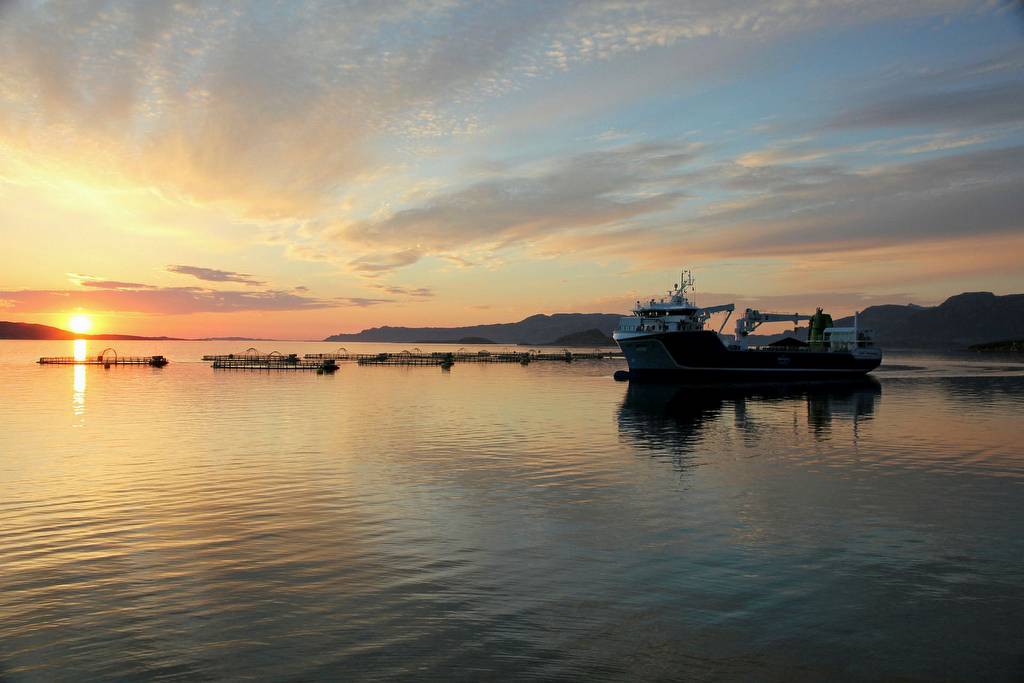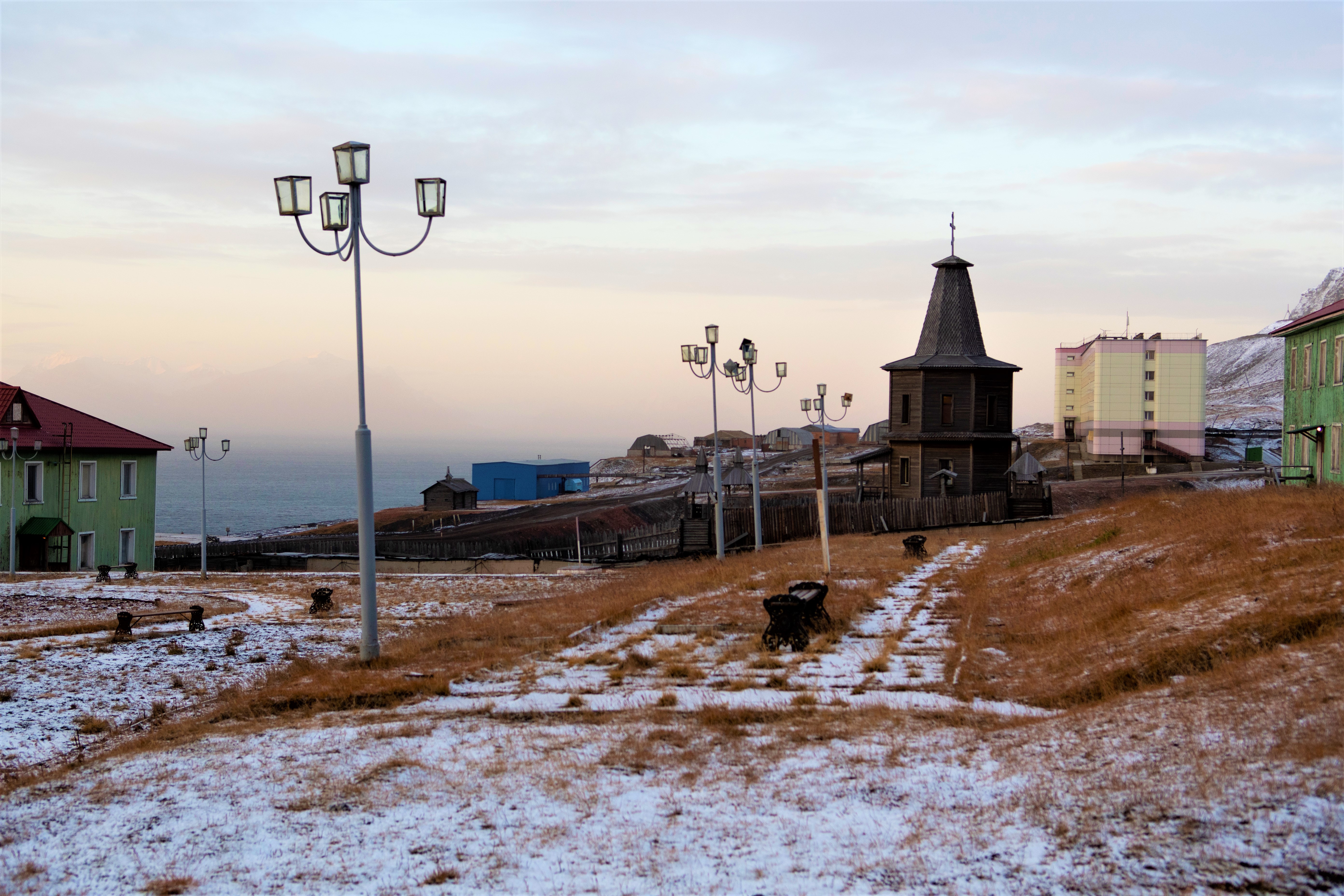“Want to Share the Arctic Lifestyle”
Entrepreneurs Gøril and Frøydis Pedersen want to make the world warmer and share the Arctic lifestyle through their clothing brand FOGG Gildeskål. Their fashion company was recently picked out to be part of the Norwegian Fashion Hub’s initiative “Wear Norwegian”.
The FOGG Gildeskål fashion company is located on the coast in Gildeskål, just south of Bodø in Northern Norway.
The FOGG shop lies right next to the childhood home of entrepreneur sisters Gøril (37) and Frøydis (40) Pedersen and is surrounded by steep mountains, the seashore and sea eagles. At the end of a large garage, the shop faces the vast Atlantic Ocean.
The company has carved out a place for itself in the Norwegian fashion market through designing and selling hats, scarves and woolen tops for men. The Norwegian designed woolen products are inspired by the people and lifestyle of the coast of Northern Norway.
They chose the name FOGG Gildeskål to make it clear that they are rooted in Gildeskål as well as to make clear the association to natural phenomenon and climate.
“Our inspiration comes from travelers, explorers and seafarers. Our goal is to create the favorite pieces of clothing; those you wear when you are traveling and only bring one scarf and one hat. You pick the one you like the most and that is suitable for many occasions. We thought about Phileas Fogg, the fictional character who traveled the world in 80 days, and hope he would have chosen our wear for his journey. In addition, the name constitutes a Norwegian abbreviation for our names; Frøydis and Gøril, says Creative Manager Frøydis Pedersen.
Home to the North
Manager Gøril Pedersen is educated in the rare art of national costumes and works at the Nordland Museum. Creative Director Frøydis Pedersen works as an architect in Oslo. They both lived in Oslo when FOGG was created.
Their entrepreneurial spark was ignited when Gøril’s home knit hat for her partner received attention at a gig in the city. The requests for more hats kept pouring in, in particular from the hip hop community.
“That would be a cool thing to do, we thought”, Gøril says with a laugh while looking at her sister.
Though even if the entrepreneurs started up in Oslo, they had no doubt that the company would be heading north.
“Our intent was always to bring the company home to Gildeskål. Our goal was always to have the company here, on the shores of the ocean. It felt natural when we arrived here”, Gøril says.
What is it like to run a fashion company out here on the coast?
“Being a fashion company is very different here from for instance in Paris. There were challenges related to starting up. The fashion industry is a complex one and you have to understand the mechanisms”, Frøydis says.
Gøril nods.
“It can be demanding to run a company. You have to be able to stay cool and endure the occasional detour from your comfort zone”.
Gøril and Frøydis both have a background in crafts and design. The refer to themselves as ‘material nerds’ and being the only staff of the company, they have learned everything – from customer service to market development.
For years, they have seen hundreds of people trying their clothes on at various pop-up shops around Norway. Pop-ups have worked as market surveys to see how people respond to their clothes, they say.
“There has been product development all along. We have knitted many variations before finding out exactly how we want our products to be. Instead of launching a new design we have rather tried to improve our products”, Gøril explains.
We have grown much through taking on different hats and learning how things work and are related. That is rewarding.
The two sisters live far apart; Gøril in Gildeskål and Frøydis in Oslo. They run the company together from their home offices. The Corona crisis has thus not led to significant changes in their day-to-day operations. The large retailers have, however, been temporarily shut down, which has led to a drop in the number of orders.
In order to reach their customers, the entrepreneurs have therefore focused on their online shop and have seen activity here increase over the past few months.
“We have worked digitally all along and in that respect, this crisis has shown us that we have laid a solid foundation for a future-oriented company. Running a company like this 20 years ago would have been very different, Frøydis says.
They agree that the Corona crisis has demonstrated that everyone do not have to live in the same place, and also the importance of the authorities’ facilitating people living scattered and in rural areas while having connectivity in place.
They both point out that through the crisis, they have seen a positive trend in people being enthused about supporting local shops and spending money on Norwegian products produced in a sustainable fashion.
“We are excited to see this development in consumers and we believe many more will look to sustainable and local shopping. In this way, clothes and fashion follow the trend we already see in food”, Frøydis says.
FOGG Gildeskål was recently selected to be part of the “Wear Norwegian” program; an initiative from the Norwegian Fashion Hub that is to promote Norwegian fashion and design. The goals is to engage people and make them chose Norwegian fashion and support Norwegian fashion designers.
What does it mean to you to be part of “Wear Norwegian”?
“First and foremost, being part of the Norwegian Fashion Hub network means a lot when you are a company located in a very rural area. The fashion industry is a major global industry, but nevertheless a small one in Norway. Being part of the Norwegian Fashion Hub allows us to be taken more seriously”, Frøydis says.
Gøril adds that being considered a fashion supplier is key for their being part of the Norwegian Fashion Hub. The hub’s initiative aims to make people spend their money on a company that has a deeper idea behind what they make, a vision with what they do.
“The initiative represents a boost and raises awareness about what we do on a day-to-day basis.”
The companies that wanted to be part of the “Wear Norwegian” initiative had to meet certain quality criteria. To FOGG, everything that raises awareness about quality matters, the entrepreneurs says.
“Our goods should be sustainable and traceable. It is important for us to know who our suppliers are and we are closely in touch with them. We stress using the resources we have. Our close-knit relationship to nature is ingrained in our bone and marrow and in what we make”, Frøydis says and looks at her sister, who concurs:
“Just look at this place! Here in the north we have always had to take resources, the climate and the weather into account. We have cooperated and been creative in order to make things happen. All this also goes to define how we work.”
Their brand only uses pure wool that has not been mixed with synthetic materials. The main part consists of Italian OEKO-TEX certified wool as well as Norwegian wool”, they say.
“We are a part of the world”
Initially, Gøril and Frøydis made all their products themselves. With time, investors appeared, included local business developers from Gildeskål. That allowed the two sisters to focus more on marketing and sales, and to outsource some of production.
Today, some of the products are still hand knitted in Gildeskål, while parts of their production takes place in Lithuania. Some of their scarves are hand wove in a small Egyptian village, they say.
“We are nerdy about materials and have an interest in the craft. We do not see any issues with promoting a thousand year-old Egyptian craft tradition”, Gøril says.
“We who live up north have always received new impulses from afar. We have always traded internationally. “Wear Norwegian” does not represent a conflict even if not all our products are produced in Norway. We are a part of the world”, Frøydis adds.
The sisters are inspired by explorers and seafarers. The ocean has often been seen as an obstacle, yet it is also a source of new impulses. Long traditions for trade with both Russia and countries further south included textiles. The Vikings had extensive textile trade and traces have been found from textiles that the Vikings brought to Europe, Gøril says.
“You have to consider the past in order to see the future. Fashion is to interpret society today and see what you want to contribute with. Our vision is to make the world warmer through sharing the Arctic lifestyle”.
What does the future hold for your company?
“We want to expand our team and offer exciting jobs for others, including here in Gildeskål. It has always been our ambition to contribute locally with jobs and creation of wealth”, Gøril says.
The entrepreneurs are curious to see how the Corona crisis will affect their sales through shops this summer, now that foreign tourists are not around while an increasing number of Norwegians want to visit Northern Norway.
“We are curious about that effect and believe it may change some perceptions of what life is like here up north. Social media often stress nature in the High North, yet the region is far more than just exquisite nature. There are several future-oriented initiatives and exciting companies north of the Arctic Circle. Now that Norwegians are to go on holidays in their own countries, many will head north and perhaps more of them will discover these companies and a different way of living.
Over time, the sisters want to expand their team, their product range and also to explore the international market.
And their regulars are still onboard.
You still sell hats to the hip hop community?
“Our hats are in big demand in the hip hop community”, Gøril says with a smile.
“Many can identify with our starting a company with our own two hands and daring to carve out our own way forward. The Norwegian hip hop community is not that big. Many can identify with us and with daring to be a bit different from the crowd.”
This article was originally published in Norwegian and has been translated by HNN's Elisabeth Bergquist.



